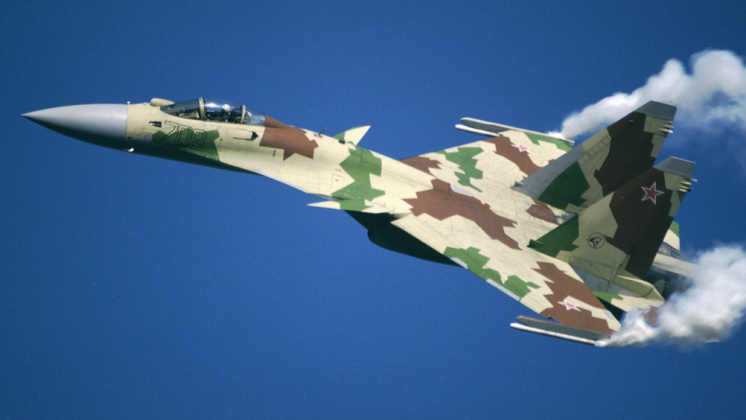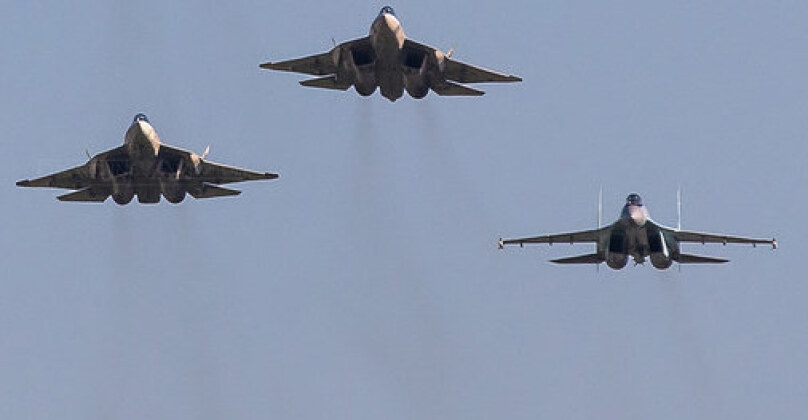News
Iranian Air Force Pilots Have Begun Training on Russian Su-35s: Was the Fighter the Right Choice?
Following an official statement from the Iranian Air Force in September that Russian Su-35 heavyweight fighters were being considered for purchase, U.S. officials indicated on December 9 that pilots from the Middle Eastern country had begun training to operate the aircraft in Russia earlier in the year with deliveries scheduled to begin in 2023. The development follows a surge in Iranian arms exports to Russia to support its ongoing war effort against Ukrainian and allied NATO forces, with Iranian drones in particular seen to have been a game changer in Russia’s favour while deliveries of short range ballistic missiles are expected by U.S. sources to materialise in future. American officials have thus referred to an emerging “full-fledged defence partnership” between the two countries, contrasting sharply with Russia’s prior hesitancy to strengthen security ties with Tehran due to Western and Israeli pressure.
As U.S. officials stressed that this defence partnership posed a threat to Iran’s neighbours, it was widely speculated that reports of an imminent strengthening of the Iranian Air Force with Russian fighters may have been intended primarily to influence Arab states in the Persian Gulf, which have been widely criticised in the West for failing to support Western positions against Russia and for their strengthening ties with China. Reports of Iranian pilots training to operate Su-35s comes as Saudi Arabia hosts Chinese President Xi Jinping for unprecedented summit meetings, which have been attended by the leaders of key Arab states, making the need to reemphasise American’s value as a partner against possible Iranian threats appear all the more important.

The Iranian Air Force has long seen its modernisation neglected, with the bulk of its fleet formed of Vietnam War era F-5 and F-4 jets acquired from the United States in the 1970s. These have been modernised domestically and supplemented by some early fourth generation designs including F-14 Tomcats, acquired in the mid-late 1970s, and Soviet MiG-29 and Su-24 fighters delivered in the 1990s. Iran’s air power, however, rests primarily in its sizeable and diverse fleet of drones some of which have proven highly sophisticated and potent on the battlefield, with capabilities not seen elsewhere in the world outside China and the United States. The possibility of Iran acquiring modern manned fighter jets has long been speculated, with efforts to modernise to a fourth generation level primarily with Soviet MiG-29s having been derailed by Western interventions in the 1990s to politically pressure multiple Soviet successor states. Although the Chinese J-10C was previously seen as the leading candidate to modernise the Iranian Air Force, and is considered a more sophisticated fighter than the Su-35 with significantly lower operational costs and maintenance needs, Russia’s high demand for Iranian drones and possibly its missiles has reportedly allowed Tehran to acquire Su-35s as part of a barter agreement. Iran is set to acquire close to one third of all Su-35s ever produced at 64 fighters, after Western pressure derailed contracts with Egypt and Indonesia and deterred several other interested parties from purchasing the aircraft.

The Su-35 has its origins in the late Soviet era in the Su-27M program to develop an enhanced variant of the USSR’s top air superiority fighter the Su-27 Flanker – which at the time was unrivalled worldwide in many key aspects of its performance. Although the Su-27M and its enhanced successor the Su-37 were both completed and made ready for production in the 1990s, Russia’s fast declining economy and Western pressure on key potential clients, most notably the United Arab Emirates, notably prevented them from entering service. The cancelation of the ambitious Soviet MiG 1.42 fifth generation fighter program in the early 2000s, and long delays to the development of a second fifth generation fighter the Su-57, lead Russia to acquire large numbers of Su-35s with over 100 already delivered. The fighter was closely based on the Su-27M and Su-37, with notable features including its extreme range, three dimensional thrust vectoring engines, use of triple phased array radars providing advanced electronic warfare and counter stealth capabilities, and access to extreme range R-37M missiles.

It was originally projected that 200 Su-35s would be produced, of which the Russian Air Force acquire half, with Iran’s large purchase potentially allowing this to materialise and providing a major boost to the program to help cover its fixed costs such as R&D. It is expected that the Russian Air Force will at least temporarily cease or cut further Su-35 acquisitions should the sale to Iran be confirmed. The Su-35 has gained far more kills against enemy fighters than any other post Cold War fighter design, and is considered capable of going head to head with top end existing Western fighters such as F-35As and F-15SAs. The fighter’s future viability into the 2030s remains in serious question, however, as China and the United States move to field sixth generation fighters which will leave the Su-35’s ‘4++ generation’ far behind, while Russia invests more heavily in the more ambitious Su-57 fighter program which will integrate a range of sixth generation features. As Iran’s adversaries continue to train and prepare for possible operations to strike its nuclear facilities with fifth generation fighters among other stealth assets, the Su-35 will be an invaluable asset which could be delivered relatively quickly – albeit one which could quickly see its viability decline due to the age of the program and its limited suitability for warfare at a sixth generation level.












